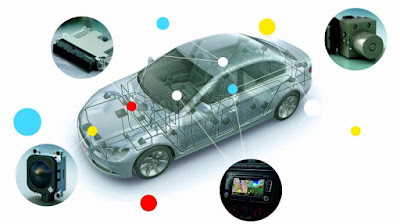Technology in your car: 8 safety features that depend on tech
With the advent of technology and computerisation, abbreviations like ABS, EBD and ESP are nowadays thrown into car brochures and news reports with abandon. But since not everyone is familiar with all of them and how they work, let’s demystify some of them today.
With the advent of technology and computerisation, abbreviations like ABS, EBD and ESP are nowadays thrown into car brochures and news reports with abandon. But since not everyone is familiar with all of them and how they work, let’s demystify some of them today.
ABS / Anti-Lock Braking System
A great boon especially in the wet, ABS prevents the wheels from locking up when you hit the brakes hard. Using pumps and sensors, ABS applies the brakes in several small doses in tricky conditions, thus giving you more control when you brake and also reducing your braking distance.
EBD / Electronic Brake-Force Distribution
When you apply brakes, the force has to be divided among all the tyres based on how much grip they can offer. The tyres that have the most weight on them offer the best grip because the load pushes them into the road more, and hence, when you press your brakes, EBD activates before ABS kicks in and automatically sends more braking power to those tyres.
BA / Brake-Assist
Simply put, BA is like a brake amplifier. When you press the brake in a manner that is sharper and quicker than usual, the system detects an emergency and the brake strength applied is greater than the pressure on the brake pedal, making up for errors in judgement/delayed reaction by the driver.
TCS / Traction Control System
TCS is an important feature in more powerful cars as their grunt delivery can prove to be too much for the tyres to handle. If an individual wheel moves faster than other, TCS detects this and automatically applies a dab of the brakes to that particular wheel to stop it from spinning out of control.
ESP / Electronic Stability Program
ESP monitors your inputs and compares it to the vehicle’s actual behaviour to keep your car stable. If there’s a difference in the steering wheel’s angle and the direction the car is moving in, ESP will control the power and braking strength sent to each wheel using various sensors.
HHC / Hill-Hold Control
HHC uses sensors to determine if your car has stopped at an incline/decline and holds the brakes for a few seconds even if you let go of it. This gives you enough time to get back on the accelerator and move ahead, without the risk of rolling away.
TPMS / Tyre Pressure Monitoring System
TPMS is the most self-explanatory of this lot. It checks your tyre pressure to ensure that your car offers the best grip, handling, comfort and stability, warning you if the pressure dips below the required level.
SRS / Supplemental Restraint System
SRS, which basically means airbags in layman’s terms, is a bit different from the other features here in that, while the others try to prevent an accident from happening, it tries to protect you when and if you do get into an accident.

